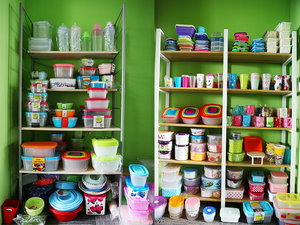Plastic products are the general term for household and industrial products that are processed from plastic as the main raw material. Including all craft products such as injection molding and blister using plastic as raw material.
Raw material formation of plastic products:
1. Now the commonly used synthetic resins for general plastics in plastic products are polyethylene (PE), polypropylene (PP), polystyrene (PS), polyvinyl chloride (PVC), modified polystyrene (ABS) and polycarbonate (PC) Wait.
2. Fillers can improve the strength and heat resistance of plastics and reduce costs. Commonly used are wood powder, plant fiber, glass fiber, diatomaceous earth, asbestos, carbon black, etc. Plasticizers can increase the plasticity and flexibility of plastics, and phthalates are commonly used.
3. Stabilizers are used to prevent synthetic resins from being decomposed and destroyed by light and heat. Stearates and epoxy resins are commonly used.
4. Colorants make plastics have various colors, and organic dyes and inorganic pigments are commonly used.
5. Lubricant makes the plastic not stick to the mold during processing and makes the plastic surface smooth and beautiful. Metal salts such as calcium and magnesium stearic acid are commonly used.
How to distinguish plastic products:
1. Tactile: Touch the edge of the product, and there is no feeling of scratching. The edge is clean and it is better for the mold, and the flash is better.
2. Smell: It smells very light, but there is a slight plastic taste, mostly products of better quality; the smell of plastic is very strong, mostly products of slightly lower quality; the smell of plastic is very heavy and has a pungent smell The taste is mostly poor quality products.
3. Vision: transparent and colorless products look good with good transparency and no impurities. Products with good quality (mostly produced from raw pellets) such as fresh-keeping bags, cups, lunch boxes, fresh-keeping boxes; low transparency or see Goods with a lot of impurities are slightly lower quality (mostly produced from raw powder), such as storage boxes, basins, hangers, and stools. Opaque goods are mostly commercial Goods with poorer quality (mostly produced by recycled materials, but recycled materials will be divided into many types, such as the recycled materials produced by the manufacturer's trimming; the goods returned by the dealers to the manufacturer) such as trash cans and trash can liners, garbage Bags of goods.
How to choose plastic products:
1. The commercial household cling film is mainly polyethylene (PE) plastic film. When you buy it, you should look for the signs of "PE", "PVC-free", and "Can be heated in a microwave oven". Use a fire to emit white smoke. Such products are safe.
2. Plastic bags should be purchased in large shopping malls and reputable supermarkets. There are also some simple methods to roughly identify plastic bags with good safety: the hand feels slippery, there is a crisp sound when shaking, it is flammable and emits white smoke when exposed to fire, and it will surface when entering water, odorless, and without color.
3. Another kind of cling film is polyvinyl chloride (PVC) plastic film, which is characterized by good transparency, not easy to break, strong adhesion, low price, and obvious burnt black marks when burned with fire. This kind of cling film is added with a large amount of plasticizer phthalate during the processing process, and it will release harmful components when exposed to heat and oil. It is only suitable for cold storage of vegetables and fruits.



